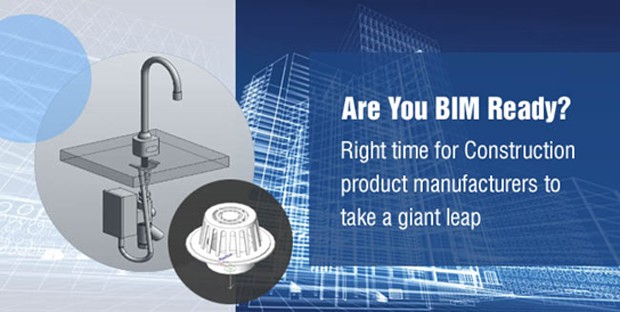The benefits of BIM across a construction project’s lifecycle and across the operational stages post occupancy, have led to the world-wide adoption and popularity of virtual design and construction technology. Moreover the adoption and implementation of BIM has also been propelled by various government mandates that promote the use of BIM for large scale projects, skyscrapers, and infrastructural development projects and government buildings. Now, it is time for construction product manufacturers to embrace 3D BIM modelling and take that giant leap.

Revit BIM for construction product manufacturers is not at all a new concept, however there have only been a few adopters. Since architects and developers have embraced BIM due to the wide range of benefits it provides, it is time for construction product manufacturers as well, to brace up for BIM adoption.
Manufacturers, who provide models of their products, which are ready to be used directly into a BIM enabled construction project, are likely to get more business. Of course, developing BIM-ready product libraries in house is a big challenge; however manufacturers can outsource BIM services.
BIM for Manufacturers - The Big Shift
The big shift – which the popularity of building information modelling has brought about for construction product manufacturers, defines the transition from CAD-based product libraries to BIM-ready construction product libraries. Today the libraries of products that manufacturers maintain are developed to support not just 3D visualisation - these models also contain a host of non graphic information about the product and its parts. This non graphic information is associated with its corresponding geometries and hence the product model can also be used for energy analysis, cost estimation etc.
What drives this big shift?
Product manufacturers create BIM-ready libraries for their product lines and incorporate as many specifications as possible into the models. Incorporation of these models into constructible models makes building information modeling quality and time efficient. And when BIM-ready product models are developed using the manufacturers specification, then these are the most reliable to use within the BIM ecosystem.
Additionally…
-
Using construction product manufacturer models can help convey design ideas in a better manner even at early design stages
-
Manufacturer models have more accurate specifications, hence energy analysis and evaluation of product performance in specific design context also translates into more accurate results.
Talking about the ‘I’ in BIM
We have often stressed upon how the information that we feed into BIM is so important and how the quality and efficiency of BIM depends on this information. When manufacturer’s products are created with accurate information and specifications, it will deliver the right level of details required for a building information model. This in turn will improve the quality, costs and performance of the buildings.
The high adoption of BIM in the construction industry is an opportunity for manufacturers to become BIM ready and gain an edge over competitors, thus driving business growth.
About the author:
Bhushan Avsatthi is an Associate Director at Hi-Tech Outsourcing Services. Bhushan imbibes the prophecy of efficient and prudent use of energy in his day to day life and advices his team to do so as well. He is also involved in green initiatives like nonprofit tree plantation project and promotes using cycles for commuting small distances. Bhushan, handles a team of architects, Structural and MEP engineers, LEED consultants and Energy modelling experts.

